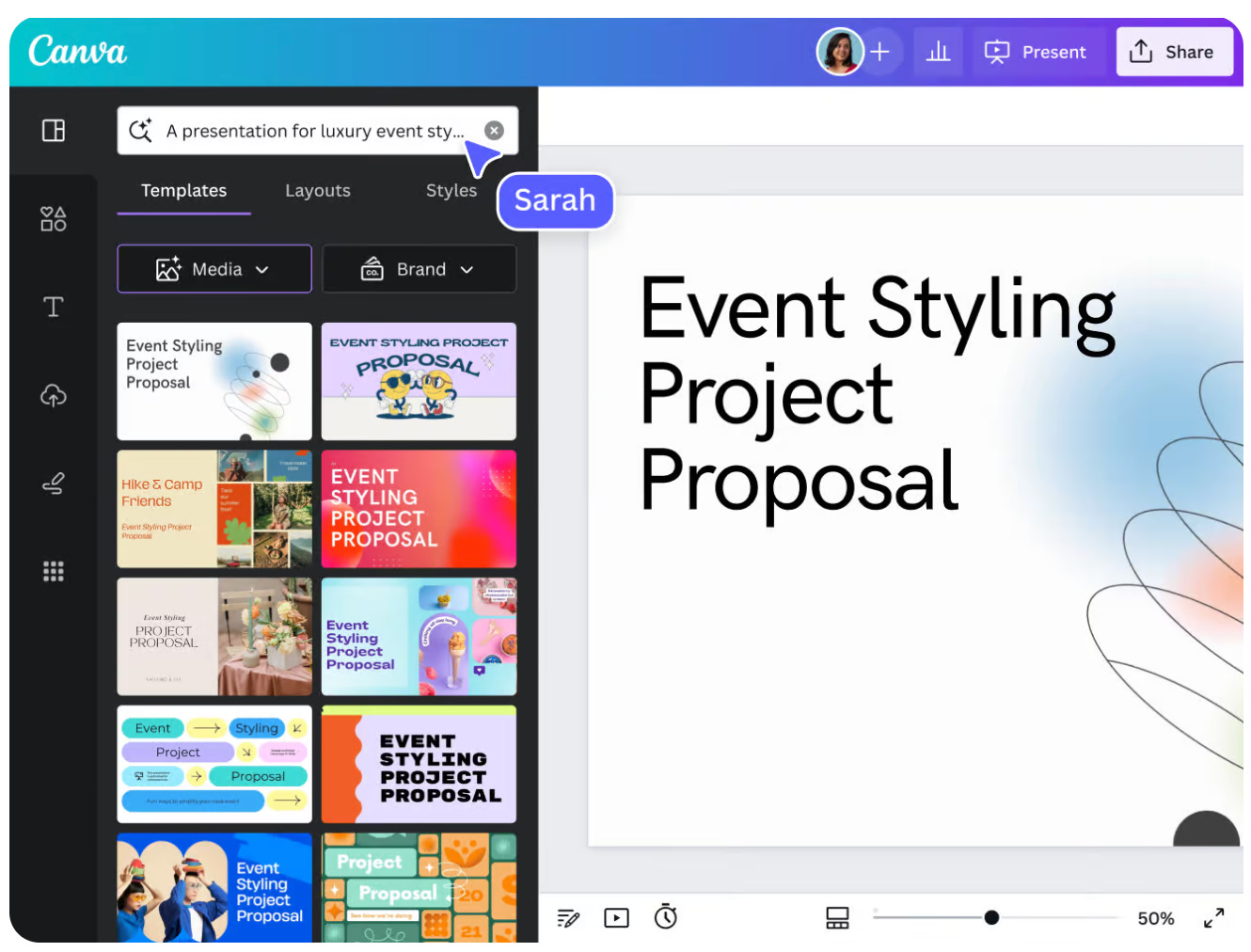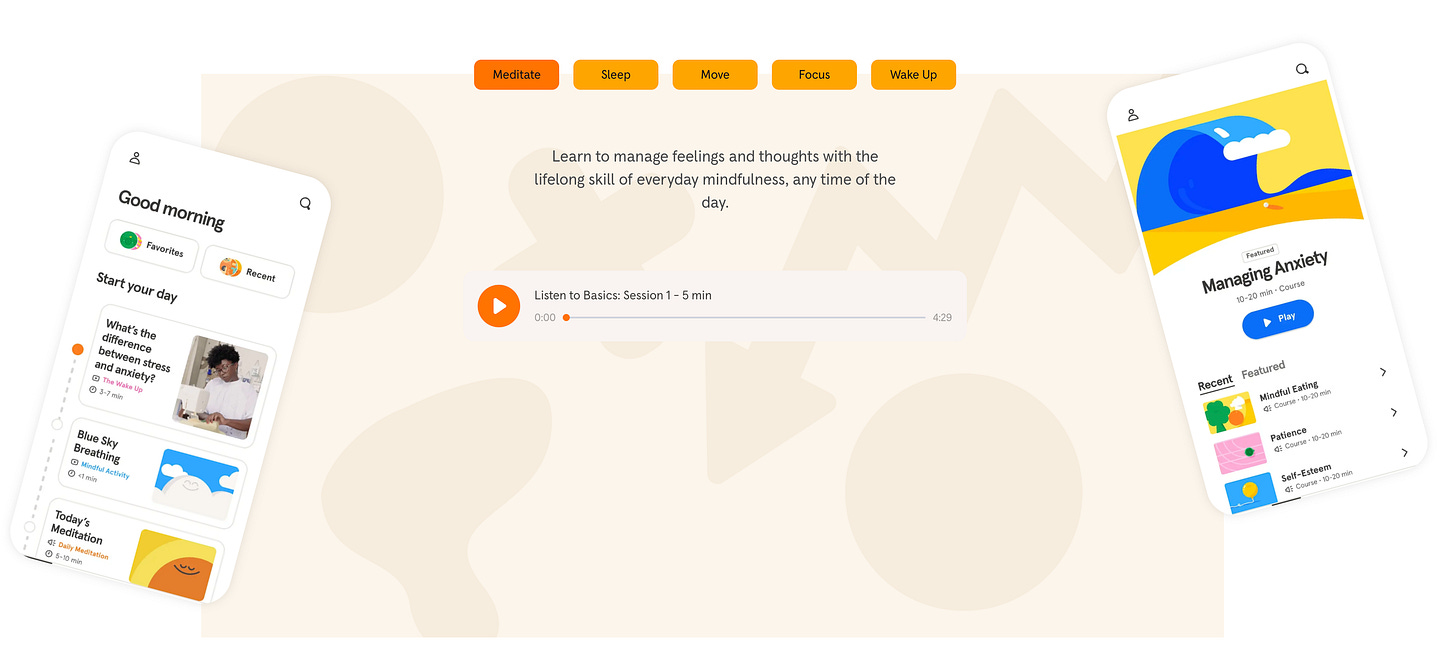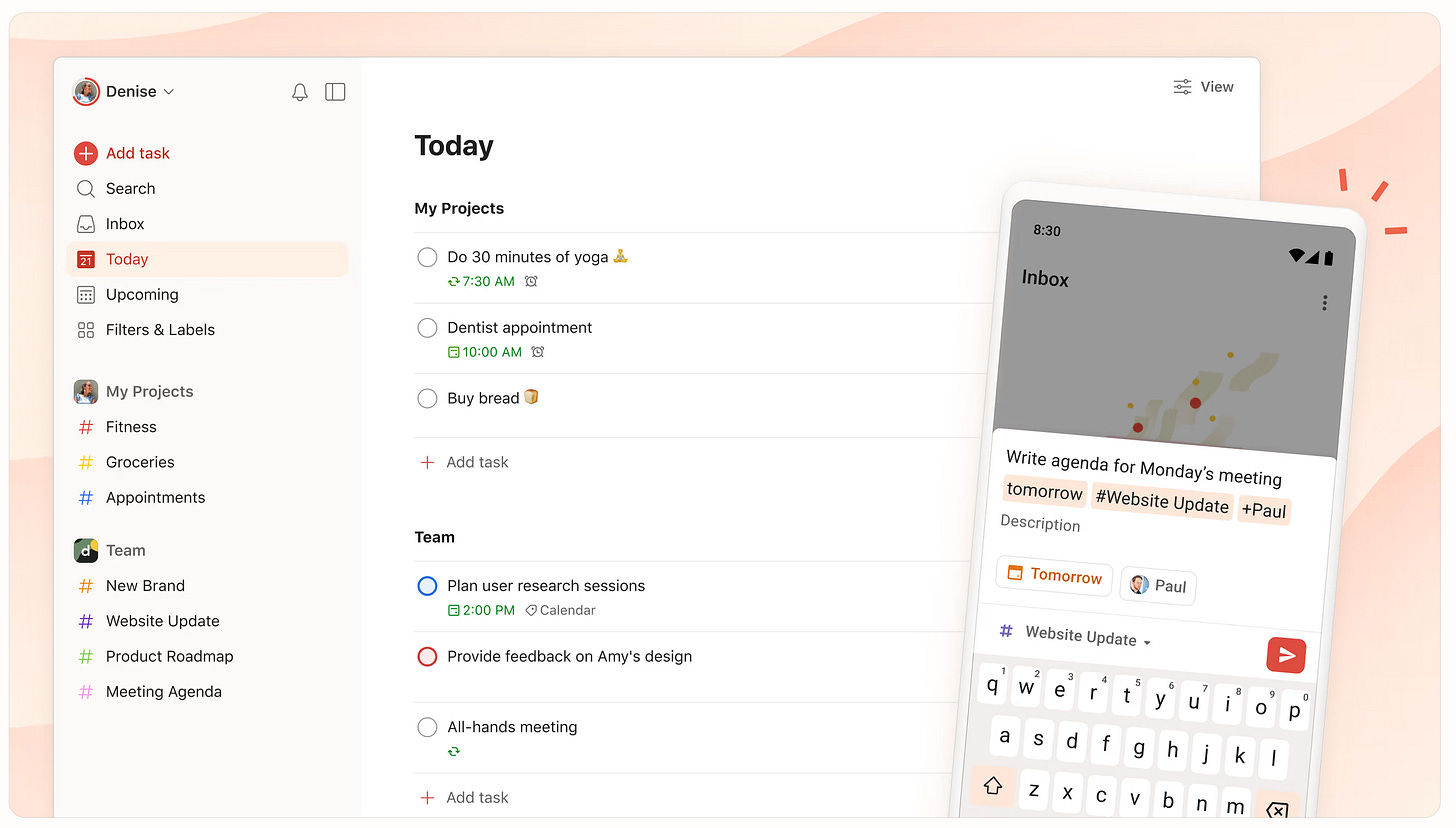10 Ways AI transforms user experiences that traditional apps can't
AI is capable of uniquely enhancing user experiences, in ways traditional methods simply can’t match. Here are 10 ways AI can make experiences to become more personalized, engaging, and efficient.
Artificial Intelligence is capable of transforming the way we interact with technology, above and beyond …
Making user experiences experiences more personalized, engaging, and efficient.
I’m a big believe that best AI tools make AI invisible. In other words, the experience should not “feel” like you’re interacting with AI.
They should be:
intuitive,
proactive,
contextualized,
hyper-personalized,
and ideally, integrated into the user’s workflow.
If you’re ever used Google, Netflix, or Amazon - you probably know what I’m talking about.
But what makes AI different?
What is it that AI can do that traditionally developed apps can’t?
This is the reason for this article.
Understanding the visible, user experience implications of AI systems helps you to start grasping these differences.
By highlighting where your investment is going and weighing the pros and cons, you can decide whether implementing AI is right for you.
Remember, knowledge is power.
Let’s dive in.
Personal Connection
Narrative Engagement: AI can dynamically generate personalized narratives by analyzing vast amounts of user data in real-time, tailoring stories and content to individual preferences and behaviors in a way that traditional static content cannot match.
Example: A fitness app that not only tracks progress but also creates personalized motivational stories based on user milestones.
Imagine your favorite fitness app not only tracking your steps but also telling the story of your fitness journey. AI can create personalized narratives by analyzing your data in real-time, highlighting your progress, milestones, and achievements. This isn’t just about showing numbers; it’s about making you feel proud of your journey, motivating you to keep going.
For instance, Fitbod uses AI to create customized strength training plans tailored to your fitness level, goals, and available equipment. The app tracks your workouts and adjusts routines over time to keep you engaged and progressing.
User Empowerment
Adaptive Goal Setting: AI can continuously adapt and refine user goals based on real-time data analysis, providing personalized feedback and adjustments that keep users on track more effectively than static goal-setting methods.
Example: Financial planning tools that adjust savings goals based on changes in income or spending patterns.
Traditional apps apply business rules to set static goals that might not fit everyone, because all the possible permutations of user goals, interests and preferences. AI, however, can continuously adjust user’s goals based on real-time data. If you’re using a finance app, AI can tweak your savings goals based on your current spending patterns, helping you save more effectively. It’s like having a personal coach who knows exactly what you need to succeed.
Duolingo, the popular language-learning app, uses AI to adapt lessons based on individual user performance. The AI continuously adjusts the difficulty of exercises, provides personalized feedback, and tailors lessons to address areas where the user needs improvement. This personalized approach helps learners progress at their own pace, making language learning more effective and enjoyable.
Visual and Interactive Appeal
Enhanced Presentation: AI can optimize content presentation by analyzing user preferences and interaction patterns, dynamically adjusting layouts and highlighting features to maximize engagement.
Example: E-commerce sites that personalize product recommendations and highlight popular items based on real-time user behavior.
AI can make content more appealing by dynamically adjusting layouts and highlighting features based on your preferences. For instance, an e-commerce site can use AI to show you products that match your tastes and interests, making shopping more enjoyable and efficient.
Canva uses AI to suggest design elements, layouts, and color schemes based on user input and preferences. This AI-driven customization helps users create visually appealing graphics without needing extensive design skills. By providing intelligent design suggestions, Canva makes the creative process more accessible and enjoyable.
Immersive Experiences
Interactive Story-Driven Interfaces: AI can create adaptive, interactive narratives that respond to user choices and behaviors, providing a personalized and engaging experience that static content cannot offer.
Example: Educational platforms that use AI to tailor lessons and interactive scenarios to individual learning styles and progress.
AI can create interactive narratives that respond to your choices, providing a personalized and engaging experience. Imagine an educational platform where lessons adapt to your learning style and pace, making studying more effective and enjoyable.
Another example is Squibler. It allows users to craft unique stories by inputting their ideas, which the AI then expands into detailed narratives. This dynamic storytelling makes content more engaging and personal.
Goal-Oriented Design
Real-Time Feedback and Adaptation: AI can provide instant feedback and adjust user goals and tasks in real-time, enhancing motivation and keeping users on track more effectively than periodic manual adjustments.
Example: Health apps that adjust workout plans based on real-time performance data and user feedback.
AI provides instant feedback and adjusts your goals in real-time. This is incredibly motivating because you see immediate results and know exactly what to do next. For example, a health app can adjust your workout plan based on your performance, ensuring you stay on track and motivated.
Headspace, a meditation app, uses AI to tailor meditation sessions based on user feedback and progress. The AI adjusts session recommendations and difficulty levels in real-time, ensuring that users receive the most effective guidance for their mindfulness practice. This adaptive approach helps users achieve their mental health goals more efficiently.
Exclusive Opportunities
Personalized Content and Offers: AI can analyze user data to deliver highly personalized (also known as hyper-personalized) content and exclusive offers, creating a sense of individual attention and value that broad marketing strategies cannot achieve.
Example: Streaming services that tailor content recommendations and special offers based on individual viewing habits.
AI can deliver hyper-personalized content and exclusive offers just for you. This makes you feel valued and special. For example, a streaming service might recommend movies and shows based on your viewing habits, making your entertainment experience unique and enjoyable.
Amazon utilizes AI to provide personalized shopping experiences. By analyzing browsing and purchase history, AI recommends products that align with user interests and preferences. These personalized recommendations enhance the shopping experience, making it more relevant and convenient for users.
Engagement and Curiosity
Dynamic Content Updates: AI can introduce new content and suggest new features based on user engagement patterns and preferences, keeping the experience fresh and interesting without the need for manual updates.
Example: News apps that curate and deliver personalized news stories and updates in real-time.
AI keeps things fresh by introducing new content based on your engagement patterns. This means you’ll always find something new and interesting, whether it’s new features in an app or fresh articles in a news app.
YouTube uses AI to personalize video recommendations based on viewing history and user interactions. The AI continuously updates the content feed, ensuring that users discover new and interesting videos. This dynamic content personalization keeps users engaged and encourages prolonged interaction with the platform.
Timeliness and Relevance
Optimal Reminders and Notifications: AI can determine the best times to send reminders and notifications based on user behavior patterns, ensuring higher engagement and relevance compared to static schedules.
Example: Productivity apps that send reminders at times when users are most likely to be responsive, based on their past interactions.
AI can send reminders and notifications at the best times, ensuring you engage with them. For instance, a productivity app might remind you to take a break exactly when you need it, based on your work patterns.
Todoist, a productivity app, uses AI to analyze user behavior and send reminders at optimal times. The AI identifies patterns in user activity and suggests the best times for task completion, enhancing productivity and task management. This intelligent scheduling helps users stay organized and on track.
Simplification and Assistance
Process Automation and Streamlining: AI can automate complex processes and tasks, reducing user effort and streamlining workflows in ways that manual methods cannot.
Example: Virtual assistants that handle scheduling, email management, and other administrative tasks based on user preferences and past behavior.
AI can automate complex tasks, making your life easier. Think of virtual assistants that manage your schedule, emails, and even grocery lists. This reduces your effort and helps you focus on more important things.
Grammarly, a writing assistant, uses AI to provide real-time grammar and style suggestions. The AI analyzes text as you write, offering corrections and improvements to enhance clarity and readability. This automated assistance streamlines the writing process, making it easier for users to produce high-quality content.
Visibility and Accessibility
Attention Optimization: AI can analyze user interactions to optimize the placement of key elements and ensure they capture user attention, improving usability and engagement.
Example: Websites that dynamically adjust their layouts to highlight the most relevant content for each user.
AI can analyze how you interact with an app to optimize the placement of key elements, making them more visible and accessible. This improves usability and ensures you find what you need quickly and easily.
Google Maps uses AI to optimize routes and provide real-time traffic updates. The AI analyzes traffic data and suggests the fastest routes, ensuring that users reach their destinations efficiently. This real-time optimization enhances the user experience by providing accurate and timely navigation assistance.





